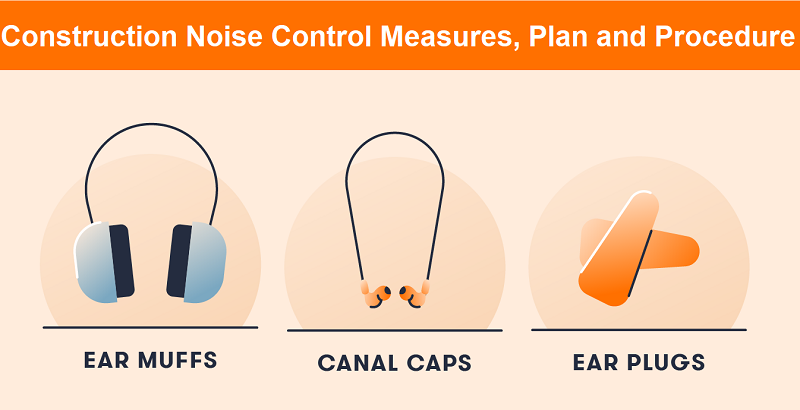This health and safety instruction provides information on the noise hazards and control measures regarding noise in the workplace with the view to prevent industrial hearing loss.
The safety procedure is applicable for all kind of projects.
Additional control measures may be required depending on project and country local legal occupational health and safety requirements and regulations.
Noise is measured with a sound level meter in units of decibels dB.
The term “A” frequency weighting and “fast response” are used to try to relate the measurement to human response to noise.
Decibels are a logarithmic way to express how humans perceive noise.
The logarithmic scale enables manageable figures to be used so that each time there is an increase of 3 decibels (dB) of noise, the actual intensity doubles (i.e. twice as loud).
The standard noise at work regulations, define three levels of noise exposure at which action is required:
i. First action level 80 dB(A). average daily exposure (8 hours)
ii. Second action level 85 dB(A). average daily exposure (8 hours)
iii. Peak action level 200 Pascals. (140 dB).
Hazards and Risks Associated with Noise Pollution
Workers are exposed to noise from a wide variety of sources including air tools, grinders, dumpers, pneumatic breakers, compressors, piling hammers and electrical powered tools.
Excessive noise can cause permanent hearing damage to those exposed to it.
Assessments need to be made by a competent person to identify all workers likely to be exposed at or above the first or peak action levels.
Periodic HSE inspections will include reviews of workplaces and the exposure of personnel to noise pollution.
The items listed below are common causes for high noise levels in the workplace:
i. Operation of noisy machines and equipment;
ii. Working indoors or in confined spaces;
iii. Working alongside noisy machines or processes;
iv. Machine panels and covers missing;
v. Engines left running when machines are not in use;
vi. Missing silencers and mufflers;
vii. Noisy processes.
viii. Too many traffic vehicles are passing inside or near the work place
Noise Control Measures
An action plan to reduce the danger from noise should consider the following points:
i. Quiet plant to be specified wherever possible;
ii. Noise control measures such as exhausts silencers and enclosures to be maintained and used properly;
iii. Noisy processes such as scabbling to be reduced as far as possible;
iv. Relocate any noisy process, e.g. air arc gouging, far away from workshops and people as practicable as possible.
v. Noisy areas and plant to be identified and marked;
vi. Persons informed of noisy areas and kept away as far as possible;
vii. If noise level is between 80 – 85 dBA average daily exposure, personnel at risk should be informed and hearing protection made available;
viii. If noise level is above 85 dBA average daily exposure or peak level, hearing protection should be provided and worn; onus to comply on user.
ix. The issue of hearing protection should be recorded and persons should be properly trained.
x. Above all, the noise level should be reduced wherever reasonably practicable.
Training
All employees should be provided with information, instruction and training to include:
i. The likely noise exposures anticipated in the workplace and the risks such exposures create;
ii. Control measures to eliminate or minimize the risk;
iii. How to maintain any control measures which have been implemented.
iv. Hygiene regarding hearing protection.
Signage
In the area, where the noise level cannot be reduced to within the permissible limits, mandatory signage to be provided, warning and informing workers to use necessary and suitable hearing protection.
Discover more from Project Management 123
Subscribe to get the latest posts sent to your email.